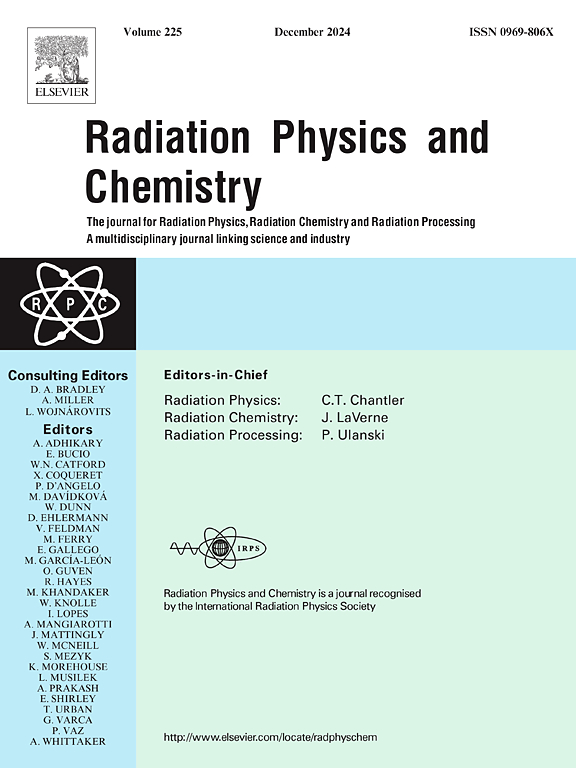石油和天然气作业的规范监控
IF 2.8
3区 物理与天体物理
Q3 CHEMISTRY, PHYSICAL
引用次数: 0
摘要
自然发生的放射性物质(NORM)可以在上游的石油和天然气设施中找到,包括立管、管道、阀门、分离器、其他顶部设施和储存容器。本文提供了来自马来西亚的数据,这些数据是在20世纪90年代进行的一项为期数年的综合研究中获得的,涉及多个海上和陆上油气勘探和生产运营商。该调查可以建立一套早期的参考水平,用于观察石油和天然气行业中NORM的存在,并在常规条件下以及特定活动(特别是维护和修井)期间进行测量。标准水平数据的数量和质量提供了一个基线,此后有助于确定受影响的设施、废物流和适当的管理。评估是结合使用现场设备和实验室设施进行的。相对较低的发生率,但表明潜在的大量,NORM在更明显的水平上被观察到,例如外部和内部(特定的监测设施内部检查)暴露率分别高达21.2 μSv/h和145.0 μSv/h。这些可与海上的平均外部暴露率约为0.13 μSv/h,陆上为0.10-0.25 μSv/h,国家规定限值为0.5 μSv/h(根据每年1 mSv计算,假设每年2000个工作小时)进行比较。在一个极端情况下,船舶清洁活动产生的污泥和沙子的标准总活性浓度为209.9 Bq/g,而在调查时,国家总活性限制为3 Bq/g。在日常操作中,初步调查显示α和β排放物表面污染,氡气体和空气中微粒的含量较低,NORM被严格限制在设施内。相反,此后更容易观察到超过管制限制的特定监测水平。目前,定期监测仍在继续,基准线水平为加强安全措施、验证法规限制的合规性以及支持海上油气环境的可持续运营提供了关键数据。旨在管理受规范污染的设施和废物的工业程序正在帮助减轻辐射暴露和环境影响的风险。本文章由计算机程序翻译,如有差异,请以英文原文为准。
NORM monitoring of oil and gas operations
Naturally Occurring Radioactive Materials (NORM) can be found in upstream oil and gas facilities, including risers, tubulars, valves, separators, other top-side facilities, and storage vessels. Data from Malaysia are offered herein, arising from a comprehensive study of several years duration carried out during the 1990s, obtained across multiple exploration and production operators in off- and onshore oil and gas environments. The survey allowed the establishment of an early set of reference levels for the observation of NORM presence in the oil and gas industry, with measurements made under routine conditions as well as during specific activities (maintenance and workovers in particular). The quantity and quality of NORM level data have provided a baseline that has since aided in identification of affected facilities, waste streams, and appropriate management. Assessments have been carried out using a combination of field equipment and laboratory-based facilities. Of relatively low occurrence, nevertheless indicative of potentially large volumes, NORM at more pronounced levels are observed, examples including external and internal (specific monitoring internal inspections of facilities) exposure rates of up to 21.2 μSv/h and 145.0 μSv/h respectively. These can be compared against a mean external exposure rate of some 0.13 μSv/h offshore, 0.10–0.25 μSv/h onshore and a national regulatory limit of 0.5 μSv/h (derived from 1 mSv/year, assuming 2000 working hours/year). In one extreme case, sludge and sand from vessel cleaning activities recorded NORM total activity concentration of 209.9 Bq/g, compared against a national total activity regulatory limit of 3 Bq/g at the time of the survey. In routine operations, the initial survey showed alpha and beta emitter surface contamination and elevations of radon gas and airborne particulates of low occurrence, NORM being confined strongly within facilities. Conversely, specific monitoring levels exceeding regulatory limits have since been more readily observed. Regular monitoring has continued to present time, the datum line levels providing data critical in enhancing safety measures, validating compliance with regulatory limits, and supporting sustainable operations in offshore oil and gas environments. Industry procedures aimed at the management of NORM-contaminated facilities and waste are helping to mitigate risks from radiation exposure and environmental impact.
求助全文
通过发布文献求助,成功后即可免费获取论文全文。
去求助
来源期刊

Radiation Physics and Chemistry
化学-核科学技术
CiteScore
5.60
自引率
17.20%
发文量
574
审稿时长
12 weeks
期刊介绍:
Radiation Physics and Chemistry is a multidisciplinary journal that provides a medium for publication of substantial and original papers, reviews, and short communications which focus on research and developments involving ionizing radiation in radiation physics, radiation chemistry and radiation processing.
The journal aims to publish papers with significance to an international audience, containing substantial novelty and scientific impact. The Editors reserve the rights to reject, with or without external review, papers that do not meet these criteria. This could include papers that are very similar to previous publications, only with changed target substrates, employed materials, analyzed sites and experimental methods, report results without presenting new insights and/or hypothesis testing, or do not focus on the radiation effects.
 求助内容:
求助内容: 应助结果提醒方式:
应助结果提醒方式:


